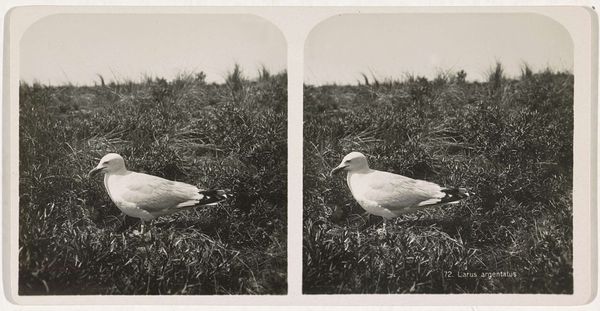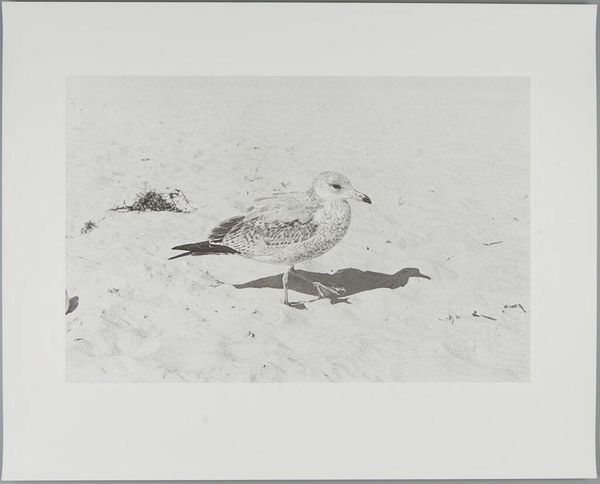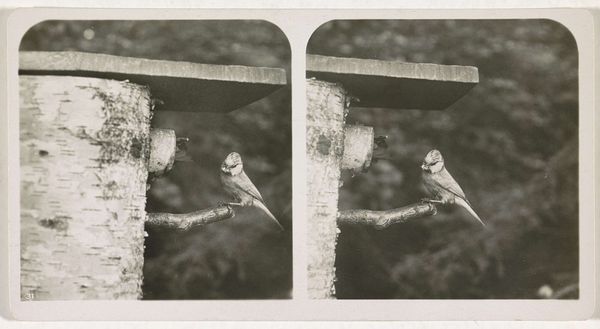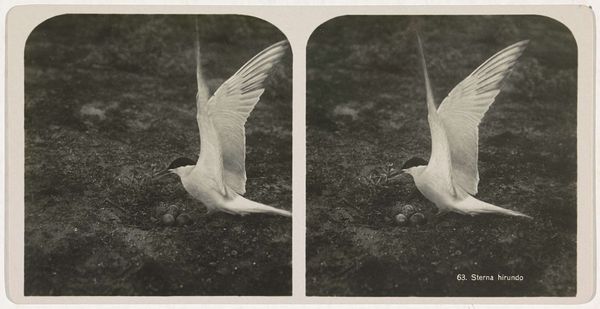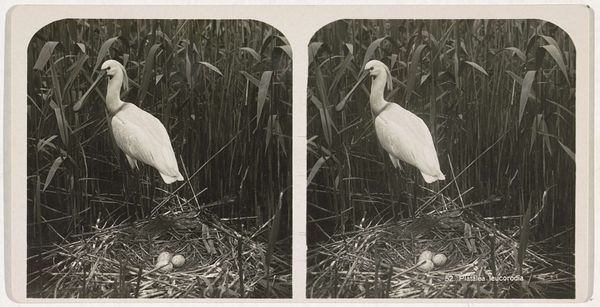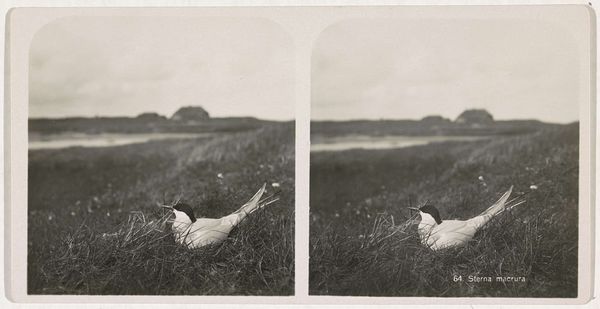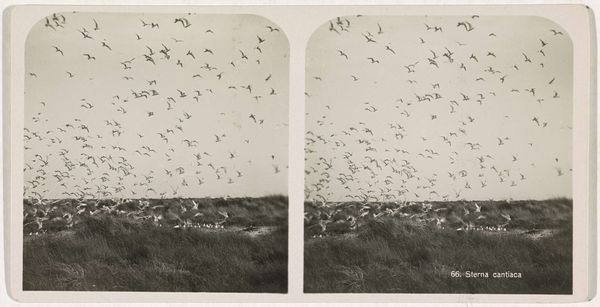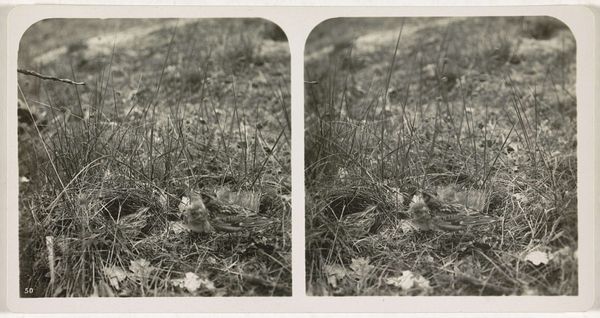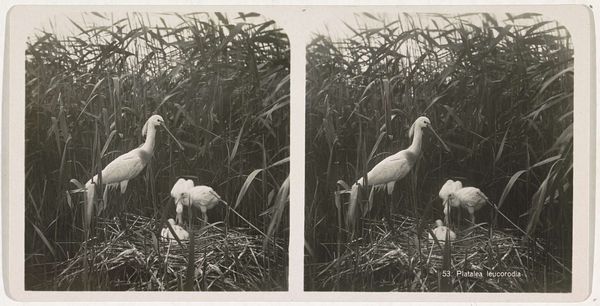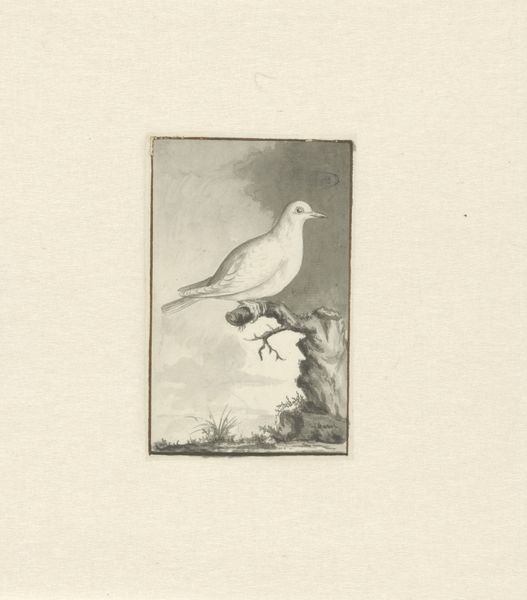
print, photography, gelatin-silver-print
#
still-life-photography
# print
#
landscape
#
figuration
#
photography
#
gelatin-silver-print
#
realism
Dimensions: height 84 mm, width 165 mm
Copyright: Rijks Museum: Open Domain
Editor: This gelatin silver print from somewhere between 1870 and 1940, titled *Broedende stormmeeuw*, or "Brooding Common Gull", presents a stereoscopic view of a gull nestled on a sandy beach. The duplicated imagery is quite interesting... It seems almost serene, but also vulnerable. How would you interpret the purpose of this image within its historical context? Curator: That's an excellent observation about the stereoscopic format adding depth! It prompts me to think about how the burgeoning field of photography was being deployed in this period. It wasn't just about artistic expression; scientific observation and documentation became quite popular. How might the choice to photograph a 'brooding' bird – a vulnerable subject as you mentioned – serve a socio-political agenda? Was this purely a study, or was there a didactic motive? Editor: A didactic motive… I hadn't considered that. It almost seems too simple an image for that, but I suppose that the "natural world" was, and remains, heavily politicized. What does this have to do with the location? The Rijksmuseum? Curator: The Rijksmuseum showcases art's connection to Dutch identity. Think about the Dutch landscape painters: celebrating their local natural world was bound up in national pride and socio-economic power. Now, in this piece, is the gull just *any* bird? Consider the label with “Larus Canus,” – that's not colloquial. The specific breed invites a certain level of scientific consideration that the art-consuming public might then associate with nationalism. Do you see any visual elements which make you think it either strengthens, or resists, this cultural claim? Editor: The framing of the bird feels very deliberate. I see what you mean about its formal documentation contributing to that politicization... so perhaps, then, the image is trying to communicate some kind of natural claim to that territory, even beyond an aesthetic purpose. That's a far cry from how I first saw it! Curator: Exactly. And that's the point, isn't it? Images operate within systems, making visuality a complex process. Editor: Definitely! I'll certainly never look at seemingly simple nature photography the same way again.
Comments
No comments
Be the first to comment and join the conversation on the ultimate creative platform.
